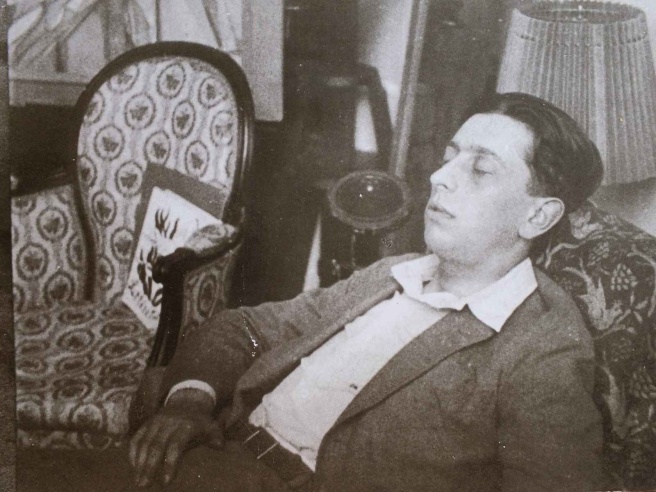
I’ve written a book chapter on GANs, surrealism, and computational tools for imagination for Welcome a New Neighbor, Creative Machine ed. Eunsu Kang, forthcoming 2021.
You can read the essay—”Communion and Cohabitation”—here: (pdf download)

I’ve written a book chapter on GANs, surrealism, and computational tools for imagination for Welcome a New Neighbor, Creative Machine ed. Eunsu Kang, forthcoming 2021.
You can read the essay—”Communion and Cohabitation”—here: (pdf download)

Joel Ong, Eunsu Kang and I presented an an intervention for Politics of the Machines 2021 in Berlin. With three human and non-human pairs—Joel with his Euglena Gracilis (Emotional Sentiment/Light,Text), Eunsu with her Violet (Viola/Speech), and me with my text and image agent (GPT3 and CLIP/BigGAN/CMA-ES)—we discussed the machinic sublime in a performative roundtable.
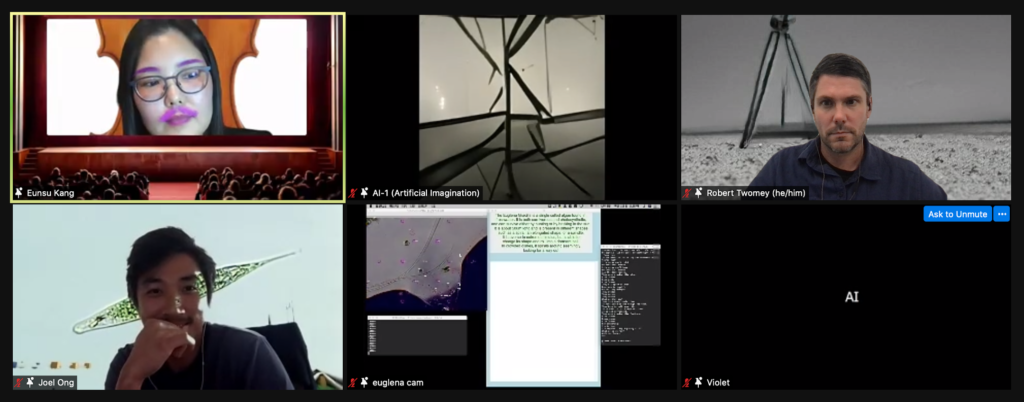
I look forward to further development of these projects and ideas with the group.
From the POM website:
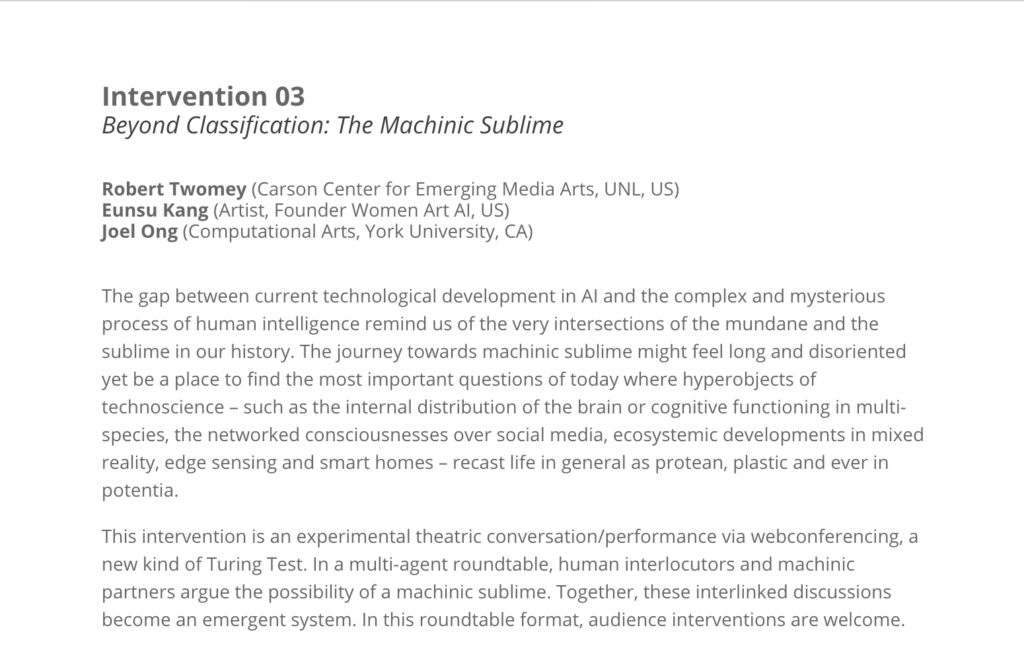

A workshop for ICER 2021, the ACM International Computing Education Research conference.
Date: Saturday, August 14, 11:00AM – 1PM PDT
Description: The increasing sophistication and availability of Augmented and Virtual Reality (AR/VR) technologies wield the potential to transform how we teach and learn computational concepts and coding. This workshop examines how AR/VR can be leveraged in computer science (CS) education within the context of embodied learning. It has been theorized that abstract computational concepts, such as data, operators, and loops, are grounded in embodied representations that arise from our sensorimotor experience of the physical world. For instance, researchers have shown that when CS students describe algorithms, conditionals, and other computational structures, they frequently gesture in ways that suggest they are conceptualizing interactions with tangible objects. Can learning to code become a more intuitive process if lessons take into account these types of embodied conceptual phenomena? This two-hour workshop explores 1) theories of embodiment and 2) new and existing tools and practices that support embodied CS learning — ranging from Papert’s LOGO turtles to a preview of an innovative 3D spatial coding platform for AR/VR under development by our group. Other open-source and commercially available resources will also be examined through streamed video demos and a hands-on break-out session for participants.
Organizers:
Details: See our workshop page at xrdesign.github.io

Together with Megan Elliott (director), Jesse Fleming, and Ash Smith we have won a ~$500k grant to establish a Design Innovation Core as one of the Research Core Facilities in the Nebraska University system. This will allow us to scale up internal and external research collaborations with the unique capabilities at the Johnny Carson Center.
More details soon!
https://research.unl.edu/blog/carson-center-earns-core-research-facility-designation/
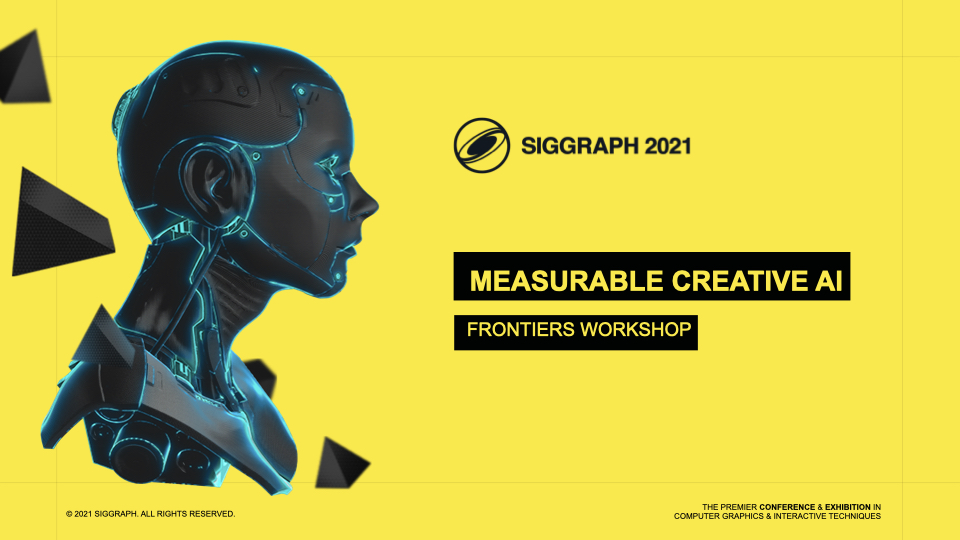
I chaired a a workshop on Measurable Creative AI as part of SIGGRAPH Frontiers, including moderating a live Q&A during the conference. We have an amazing lineup of presenters:
Pre-Recorded Panel – available On Demand, August 1 to registered SIGGRAPH attendees.
Live Discussion – Wednesday, August 11. 9am – 10am PDT/ noon-1pm EDT. https://s2021.siggraph.org/presentation/?id=fwkp_105&sess=sess243
Post-Conference – We will publish all materials on our mCreativeAI website after the event: mcreativeai.org.
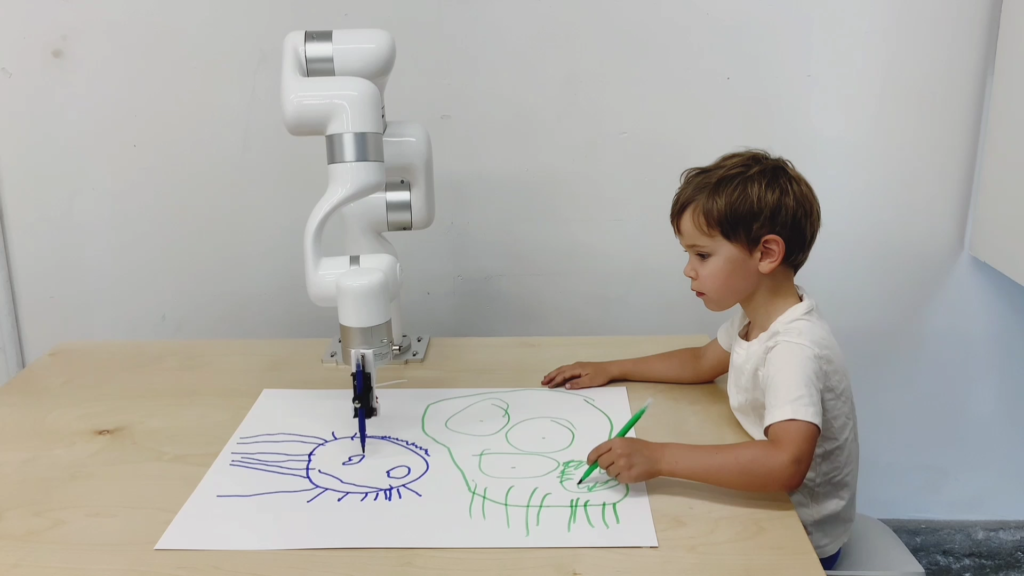
I’m pleased to present a new artwork (Three Stage Drawing Transfer) at the RSS 2021 Workshop on Robotics x Arts!
I’ll also be a panelist for the discussion with Ken Goldberg, Kim Baraka, Patricia Alves-Oliveira, and Eunsu Kang. After years working with mechatronics and various kinds of automation, I’m really looking forward to this discussion with this brilliant group of panelists!
Together with Prof. Karcher Morris and Postdoctoral scholar Jon Paden, we have been awarded a $45,000 grant from the UC San Diego Course Development and Instructional Improvement Program (CDIIP) to develop and pilot imagination for engineers within STEM curricula. This builds on work I have done as a lecturer in Data Science, Electrical and Computer Engineering/ML for the Arts, bridging cultivate of human imagination within STEM education, and focused on imagination as a driver of engagement, retention, and broadening the scope of STEM disciplines. The modules and resources we develop (and publish) will be shaped with an eye towards broad applicability across diverse educational fields.

I am co-organizing a workshop on Computational Measurements of Machine Creativity (CMMC) for CVPR21.
Bridging the Gap between Subjective and Computational Measurements of Machine Creativity
While the methods for producing machine creativity have significantly improved, the discussion on a scientific consensus on measuring the creative abilities of machines has only begun. As Artificial Intelligence becomes capable of solving more abstract and advanced problems (e.g., image synthesis, cross-modal translations), how do we measure the creative performance of a machine? In the world of visual art, subjective evaluations of creativity have been discussed at length. In the CVPR community, by comparison, evaluating a creative method has not been as systematized. Our goal in this workshop is to discuss current methods for measuring creativity both from experts in creative artificial intelligence as well as artists. We do not wish to narrow the gap between how humans evaluate creativity and how machines do, instead we wish to understand the differences and create links between the two such that our machine creativity methods improve.
June 20, 2021, 11:00am – 2:30pm EDT | http://cmmc-cvpr21.com/
I gave a workshop with faculty and graduate students from the University of Chicago Digital Media Workshop and Poetry & Poetics Workshop on Machine Imagination: Text to Image Generation with Neural Networks.
Description: With recent advancements in machine learning techniques, researchers have demonstrated remarkable achievements in image synthesis (BigGAN, StyleGAN), textual understanding (GPT-3), and other areas of text and image manipulation. This hands-on workshop introduces state-of-the-art techniques for text-to-image translation, where textual prompts are used to guide the generation of visual imagery. Participants will gain experience with Open AI’s CLIP network and Google’s BigGAN, using free Google Colab notebooks which they can apply to their own work after the event. We will discuss other relationships between text and image in art and literature; consider the strengths and limitations of these new techniques; and relate these computational processes to human language, perception, and visual expression and imagination. Please bring a text you would like to experiment with!
Workshop link here: https://github.com/roberttwomey/machine-imagination-workshop